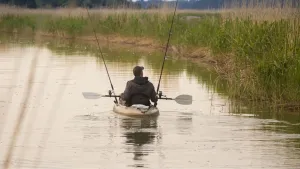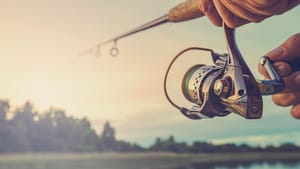Fishing is both an art and a science, requiring skill, patience, and a deep understanding of the equipment used. One critical component of a fishing reel that often puzzles both novice and seasoned anglers alike is the drag system. In this article, we'll dive into the intricacies of drag, explaining what it is, how it works, and why it's essential for a successful fishing experience.
Key Takeaways:
- Drag is a crucial component of a fishing reel that allows anglers to control the tension on the line during a catch.
- Properly setting and adjusting the drag can be the difference between landing a big fish and losing it.
- Understanding the different types of drag systems and maintenance practices can enhance your fishing reel's performance and longevity.
The Role of Drag in Fishing
When discussing what is drag on a fishing reel, it's essential to understand its primary function. Drag is a mechanical feature that applies pressure to the reel's spool, allowing it to release line under tension. This tension is what prevents the line from breaking when a fish is on the hook and pulling hard. The drag system is designed to let the line out gradually and smoothly, giving the angler more control over the fight with the fish.
The importance of drag cannot be overstated. It's the feature that enables anglers to land fish that are stronger than the breaking strength of the line. By setting the drag correctly, you can tire out a fish without the risk of the line snapping or the hook tearing free from the fish's mouth.
Types of Drag Systems
There are two main types of drag systems found in fishing reels: star drag and lever drag. Star drag systems are commonly seen on baitcasting and spinning reels. They get their name from the star-shaped wheel that adjusts the drag tension. These systems are user-friendly and allow for quick adjustments, which is particularly useful when fighting a fish.
Lever drag systems, on the other hand, are often found on conventional reels used for offshore fishing. They provide a more precise drag setting, which can be crucial when targeting larger game fish. The lever allows anglers to pre-set the maximum drag and make fine adjustments during the fight. Both systems have their advantages, and the choice between them often comes down to personal preference and the type of fishing you're doing.
Setting the Drag Properly
Knowing how to set the drag on your fishing reel is as important as understanding what drag is. The general rule of thumb is to set the drag at a third to a half of the breaking strength of your line. For example, if you're using a 12-pound test line, your drag should be set between 4 and 6 pounds of pressure.
To set the drag, you can use a handheld scale. Pull on the line just above the reel while someone else reads the scale. Adjust the drag until the scale shows the desired pressure. It's a simple process, but it's crucial for preventing line breaks and hook pulls.
The Impact of Drag on Fishing Success
A well-adjusted drag system can mean the difference between a trophy catch and a fish story about the one that got away. When a fish strikes, a properly set drag will allow the line to be pulled out smoothly, avoiding sudden jerks that could cause the line to break. It also helps in wearing down the fish, making it easier to reel in once it's tired.
Conversely, a drag that's set too tight can snap the line, while a drag that's too loose won't tire the fish, making it harder to land. It's a delicate balance that can have a significant impact on your fishing success.
Maintenance of the Drag System
Maintaining your drag system is critical for its longevity and performance. Over time, dirt, sand, and salt can build up in the drag system, causing it to stick or slip. Regular cleaning and lubrication are necessary to keep it functioning correctly.
To maintain your drag system, disassemble it according to the manufacturer's instructions, clean all parts with fresh water, allow them to dry, and then re-lubricate. This should be done at least once a season or more frequently if you fish in harsh conditions.
Advanced Drag Technologies
As fishing technology advances, so do drag systems. Manufacturers are continually innovating to create smoother, more reliable drags. Materials like carbon fiber and ceramics are being used to reduce weight and increase durability. Magnetic and centrifugal drag systems are also being developed, offering even more control and precision.
These advancements are making it easier for anglers to target bigger and stronger fish, pushing the boundaries of sport fishing and opening up new possibilities for anglers around the world.
Summary
Drag on a fishing reel is a critical component that allows anglers to manage the tension on the line when battling a fish. Understanding the different types of drag systems, how to set them properly, and the importance of regular maintenance can greatly enhance your fishing experience. With the right knowledge and care, your drag system will help you land more fish and enjoy your time on the water to the fullest. Looking for the best spinning reel for walleye? Check out our top 5 for 2024!
FAQ Section
Q: Can the drag on a fishing reel be adjusted while fighting a fish?
A: Yes, the drag can be adjusted during the fight with a fish. However, it's best to set the drag properly before you begin fishing to minimize the need for adjustments.
Q: How often should I maintain my drag system?
A: It's recommended to maintain your drag system at least once a season or more frequently if you fish in harsh conditions. Always consult your reel's manual for specific maintenance guidelines.
Q: What happens if my drag is too tight?
A: If the drag is set too tight, it can cause the line to break when a fish strikes or during the fight. It's essential to set the drag according to the strength of your fishing line to avoid this issue.



